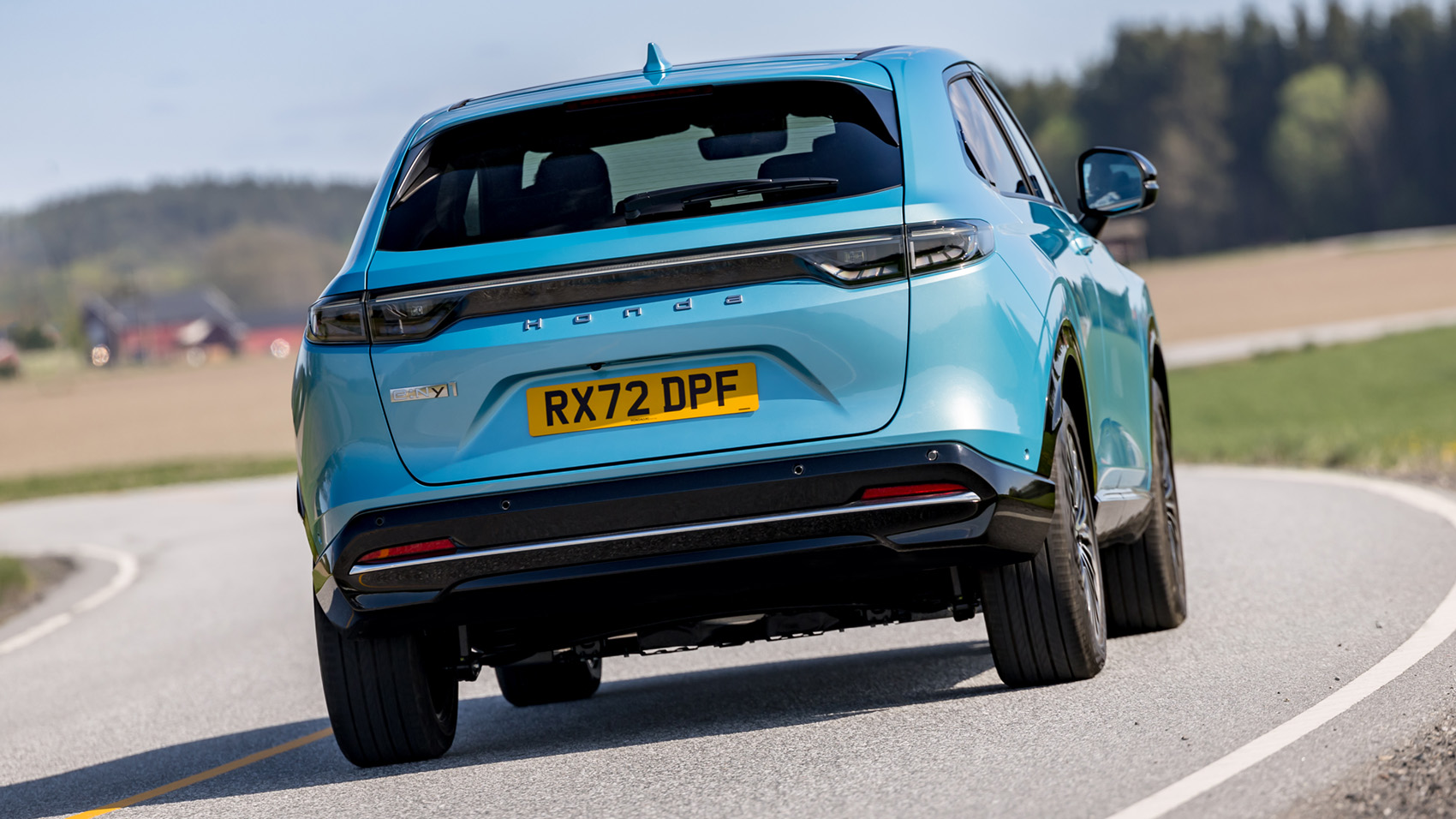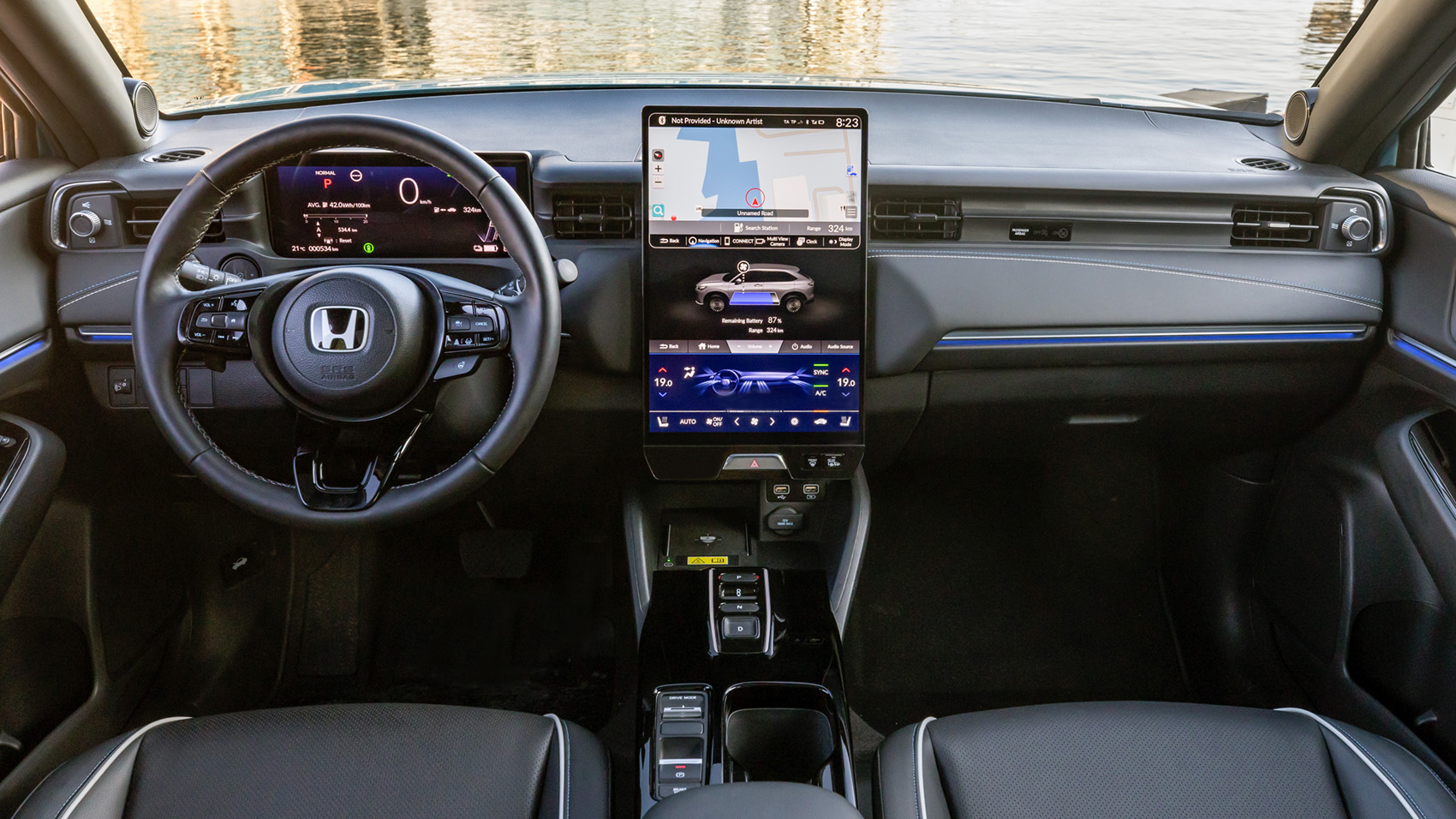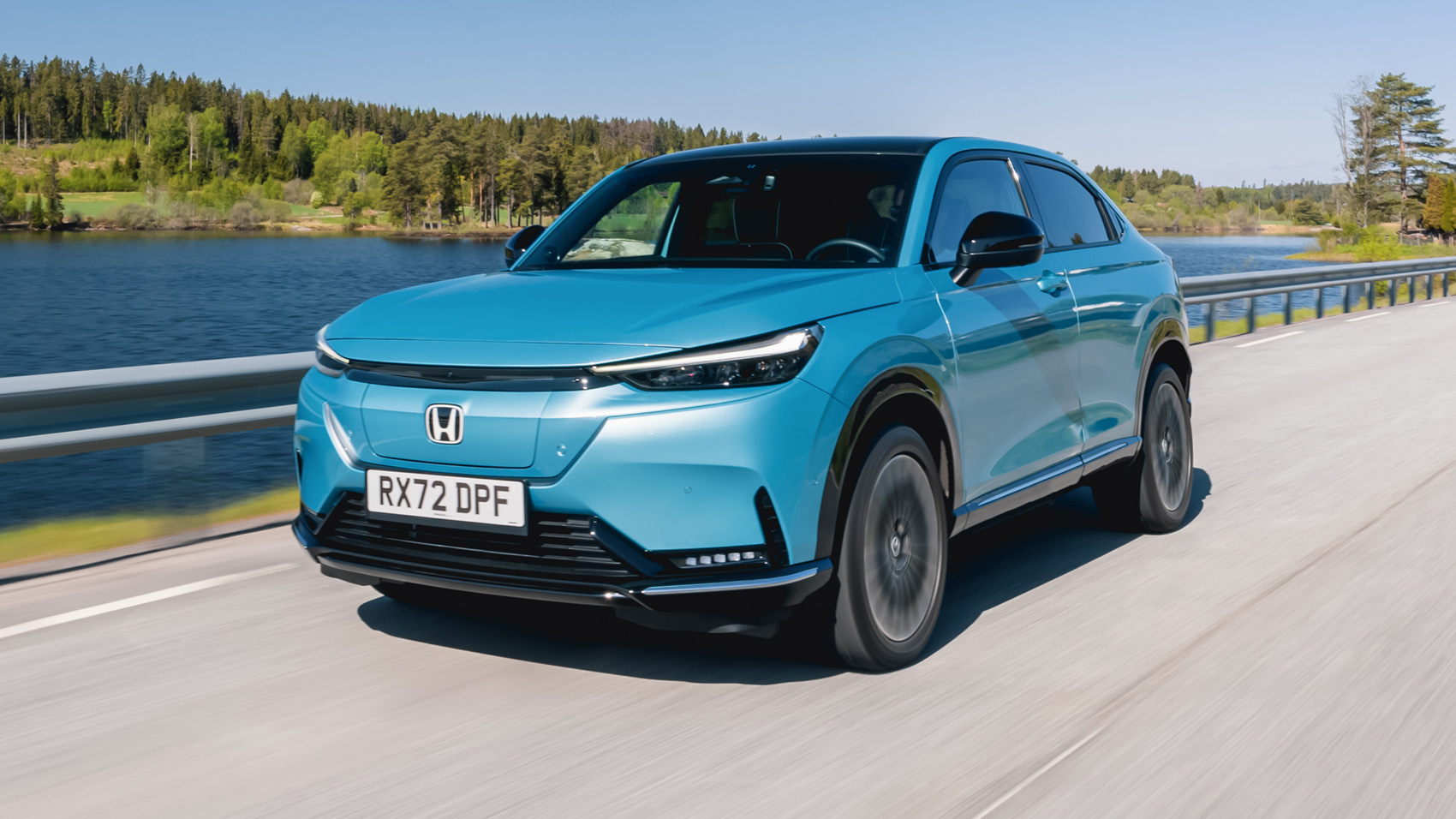
Interior
What is it like on the inside?
The hoodless digital instrument panel is a bit of a departure for Honda, and it works alright – we didn’t get to try it in direct sunlight, but it’s nice the way the top of the dashboard sits at the same height as the bonnet as if it extends right through.
The ginormo screen sits at odds with the pared-back, minimalist nature of the rest of the cabin, but the infotainment is probably only a luxury because every little frippery elsewhere has been junked.
What does that huge screen do?
The 15.1in central touchscreen does rather draw the eye, and it’s also a little disappointing in practice, with the real estate divided into thirds. We like that Honda does things a little bit differently to the rest of the crowd, but the screen is incongruous. You get permanent aircon settings at the bottom (in which case why not just put buttons in there?), menus and settings in the middle, and an info display at the top, where you’ll find the satnav or mirrored phone screen.
Is there plenty of space onboard?
There’s a surprising amount of space in the back, with pretty decent legroom. The top spec Advance models come with a panoramic roof as standard, which makes the cabin feel particularly airy. One issue is the fact that the batteries are under the seats and floor; you particularly notice it in the front passenger seat, where you’re limited on where you can move your seat.
In the boot (no frunk here) there’s 361 litres of space, which increases to 1,176 litres with the seats knocked down. Honda cites the Toyota bZ4X as the e:Ny1’s main rival – probably because they both have perplexingly stupid names – but that car has a significantly bigger boot. Even the dinky Peugeot e-2008 isn’t far off the Toyota.
Featured







